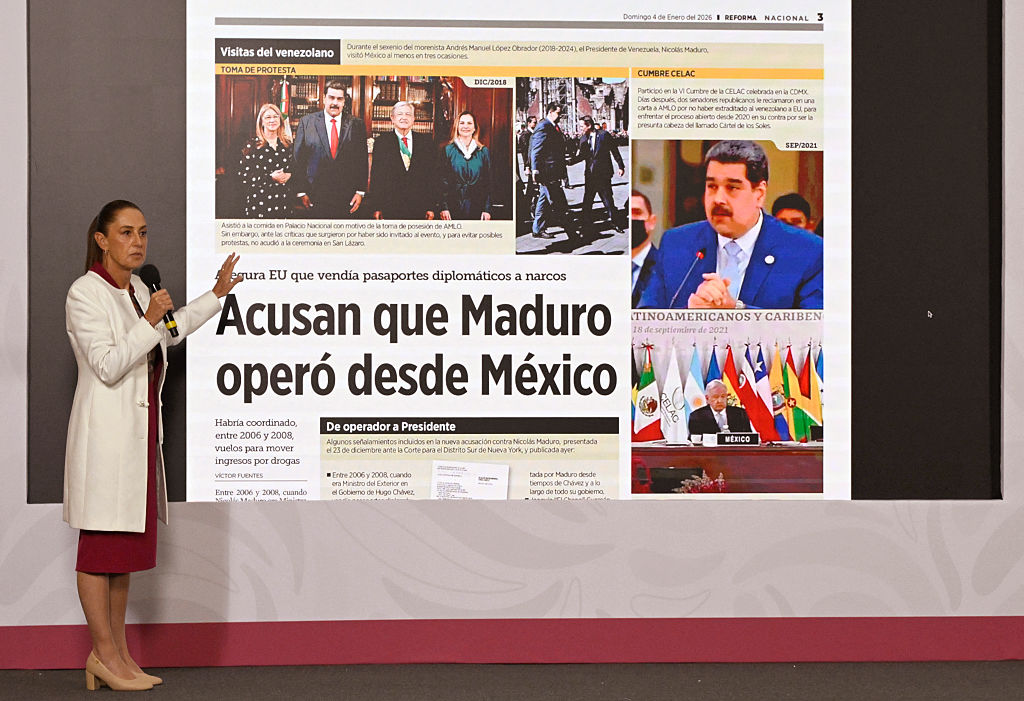Five Points to Watch on Mexico's Energy Reform
Five Points to Watch on Mexico's Energy Reform
On August 12, Mexican President Enrique Peña Nieto announced a major energy reform. COA Director of Energy Christian Gómez explores reactions and what lies ahead.
On August 12, Mexican President Enrique Peña Nieto revealed his government’s proposed reforms of the country’s energy sector, focusing on hydrocarbons and electricity. The proposal includes constitutional changes that would open up Pemex, the 75-year-old state oil monopoly, to profit-sharing contracts and foreign investment.
Will Peña Nieto’s reform get the backing it needs to pass? COA Director of Energy Christian Gómez explores this question and more.
How difficult will it be for President Enrique Peña Nieto to sell the proposal to the Mexican people?
President Peña Nieto delivered a speech that outlined, in broad strokes, his administration’s plan for reform of state oil firm Pemex and the federal electricity commission, or CFE. The announcement of the reform was long on ideas but short on mechanics. In making the case to the public, the Peña Nieto administration, as it has in the past for other topics, employed easy-to-digest infographics that described the reform and its benefits. The president also followed up the reform’s unveiling on the same day by making his case to the Mexican public during a televised evening broadcast.
Notably, the Peña Nieto plan said that energy prices would fall because of the reform. Some analysts question whether this is a desirable outcome, both for the federal budget—energy subsidies exceeded 31 percent of the budget for the first quarter of 2013—and for the environment. The president also touted the 2.5 million new jobs that would be created via the reform, and 2 percent economic growth, both by 2025. The challenge for the Peña Nieto administration will be whether it can convince the public that these are credible claims.
How are the opposition parties in Congress reacting to the proposal?
Gustavo Madero, president of the opposition National Action Party (PAN), went on record saying that the reform does not go far enough. He conceded that Pemex would no longer be a monopoly under the reform, but that it was not put it on a path to become a dominant state oil company like Brazil’s Petrobras, Colombia’s Ecopetrol, or Norway’s Statoil.
Still, the PAN bill shares similarities to the Peña Nieto proposal, yet it goes so far as to argue for the floating of shares of the company; Petrobras and Ecopetrol have successful followed this model. The PAN bill would allow for concessions for the participation of private players, which would, while keeping the oil as property of the state, allow for greater ownership stakes for foreign oil companies.
The PRD is adamant on maintaining the state’s control over oil refining, and is also against concessions. But if the PAN and PRI are able to reach an agreement, then the two parties, along with smaller allied parties, would have more than the two thirds needed in the Chamber of Deputies and Senate.
How are foreign investors reacting to the reform?
While the details of the profit-sharing contracts have not yet been presented, they could go further to satisfy the appetite of oil companies. In general, most energy companies prefer production-sharing agreements, which allow them to own some of the oil on their books. The Mexican stock market initially had a negative view, with a drop of 1.23 percent on the day of the announcement.
Nevertheless, analysts contend that energy companies will still want a piece of the action under profit-sharing contracts, as the reserves for shale and deepwater are both very appealing to the majors. Furthermore, under the proposed contracts, Mexico might allow the companies to book reserves, which would be more attractive to potential investors.
Most international oil companies welcomed the move, with several, such as Shell and Chevron, commenting publically.
Will Pemex be able to be more transparent and accountable?
A recent survey found that 88 percent of Mexicans thought that at least “a certain amount” of corruption existed within Pemex. However, some have questioned that bringing in foreign companies would be a “magic potion” to clear Pemex of its lack of transparency and alleged corruption. A huge issue remains: how to address Pemex’s debt and turn a profit. Just breaking up the monopoly will likely not be the panacea for what ails Pemex.
What is the outlook for CFE?
Peña Nieto used similar rhetoric to describe the proposed reform’s impact on CFE, stressing that the commission “would not be sold or privatized.” The proposal would allow for private participation in generation while maintaining state control of transmission and distribution. Notably, the reform would also strengthen the participation of renewable energy in the national framework, including solar and wind. The clean energy component could be a key selling point for the reform, as Mexico exploits both conventional and renewable resources.
To speak to an expert on this topic, contact alarotta@as-coa.org.








